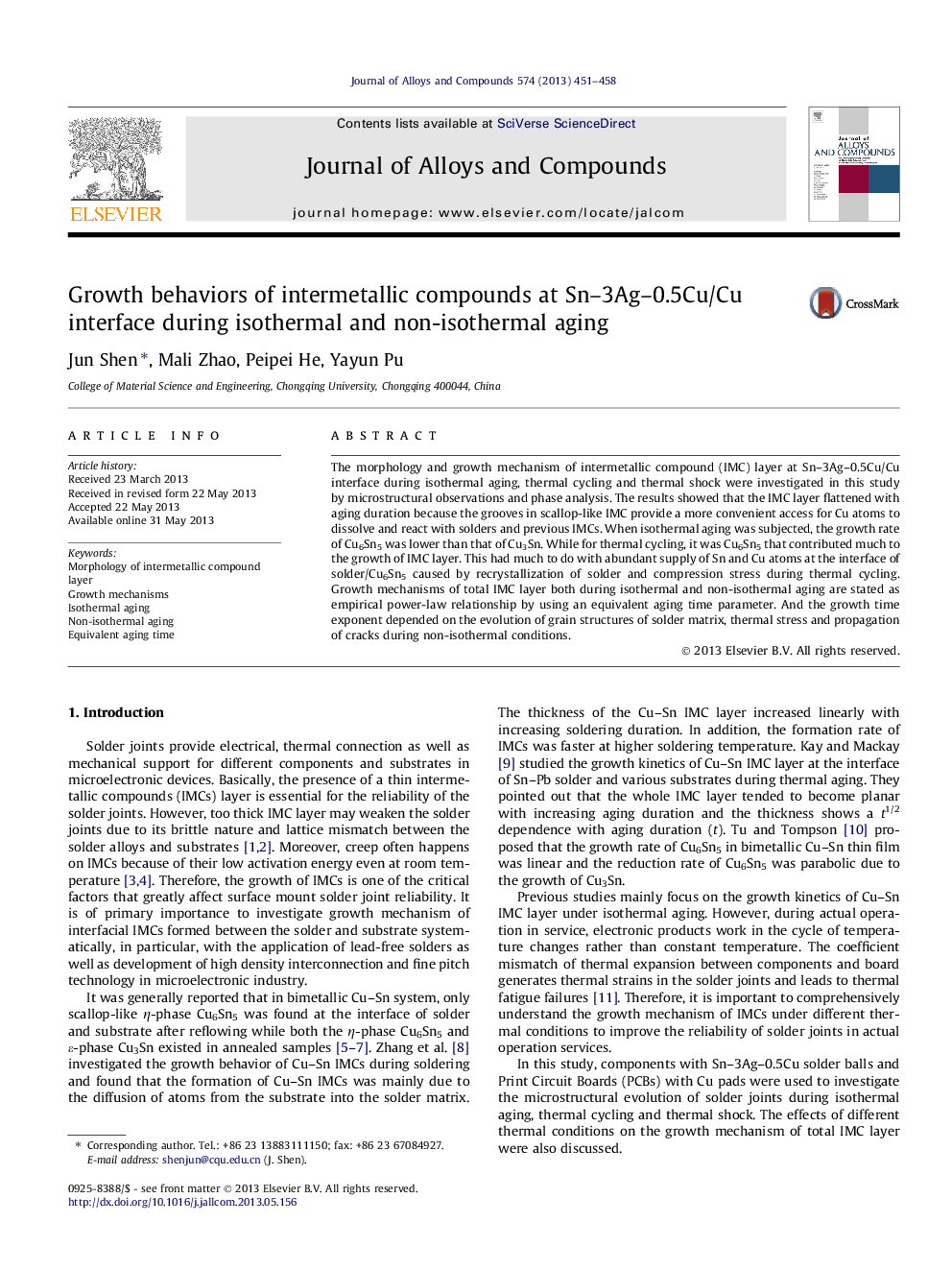| Article ID | Journal | Published Year | Pages | File Type |
|---|---|---|---|---|
| 1613609 | Journal of Alloys and Compounds | 2013 | 8 Pages |
•During isothermal aging, the growth rate of Cu6Sn5 is lower than that of Cu3Sn.•For non-isothermal aging, it is Cu6Sn5 that contributes more to the growth of IMC layer than Cu3Sn.•Re-crystallization of solder alloy during non-isothermal aging results in faster growth of IMC layer compared with isothermal aging.•During thermal shock, the growth rate of IMC layer might be slowed down by the propagation of cracks.
The morphology and growth mechanism of intermetallic compound (IMC) layer at Sn–3Ag–0.5Cu/Cu interface during isothermal aging, thermal cycling and thermal shock were investigated in this study by microstructural observations and phase analysis. The results showed that the IMC layer flattened with aging duration because the grooves in scallop-like IMC provide a more convenient access for Cu atoms to dissolve and react with solders and previous IMCs. When isothermal aging was subjected, the growth rate of Cu6Sn5 was lower than that of Cu3Sn. While for thermal cycling, it was Cu6Sn5 that contributed much to the growth of IMC layer. This had much to do with abundant supply of Sn and Cu atoms at the interface of solder/Cu6Sn5 caused by recrystallization of solder and compression stress during thermal cycling. Growth mechanisms of total IMC layer both during isothermal and non-isothermal aging are stated as empirical power-law relationship by using an equivalent aging time parameter. And the growth time exponent depended on the evolution of grain structures of solder matrix, thermal stress and propagation of cracks during non-isothermal conditions.
